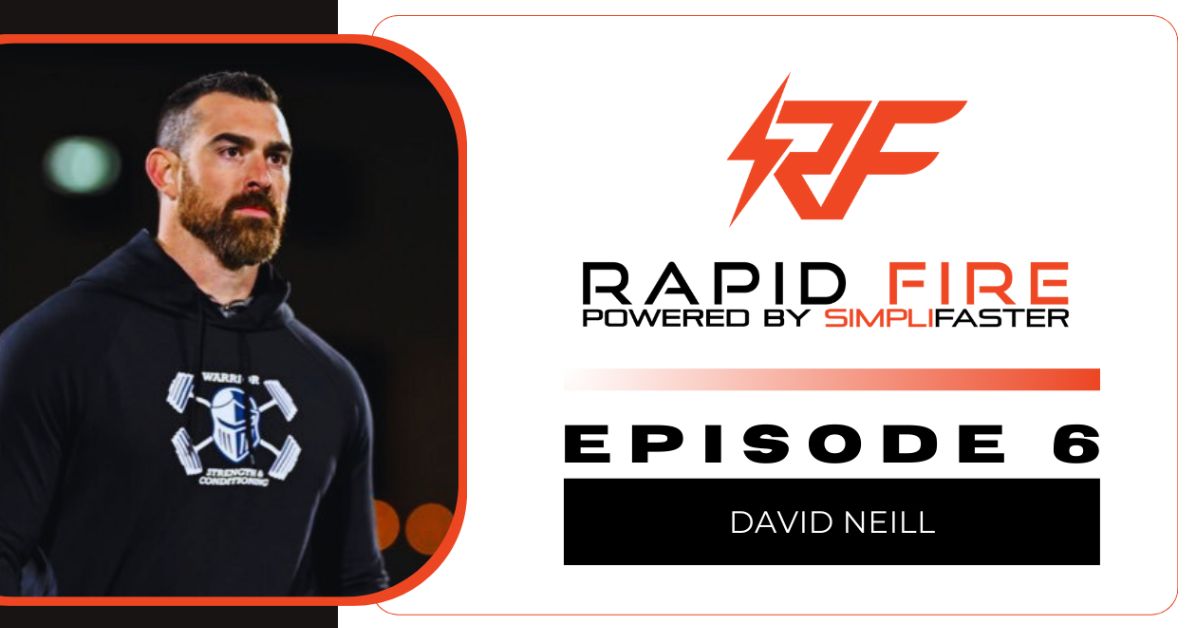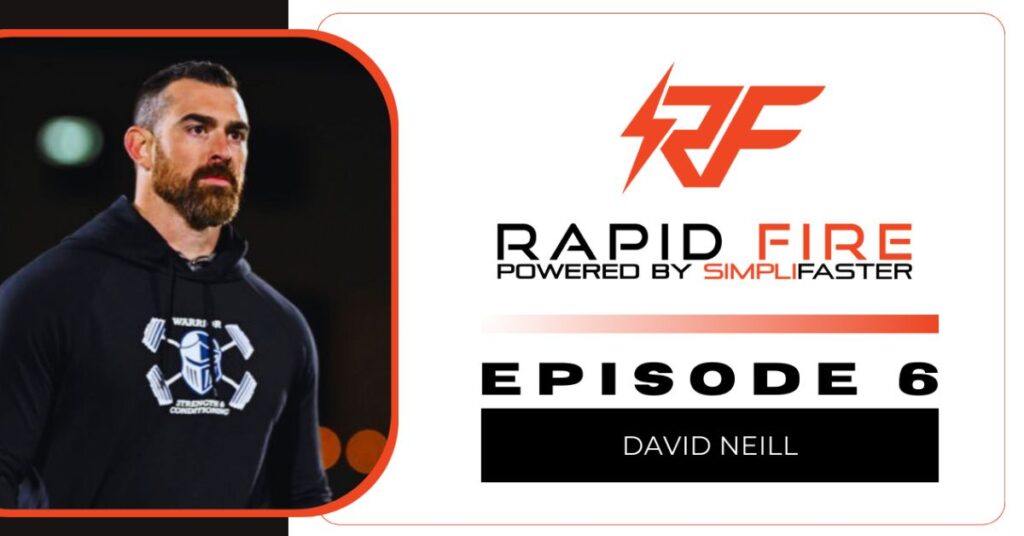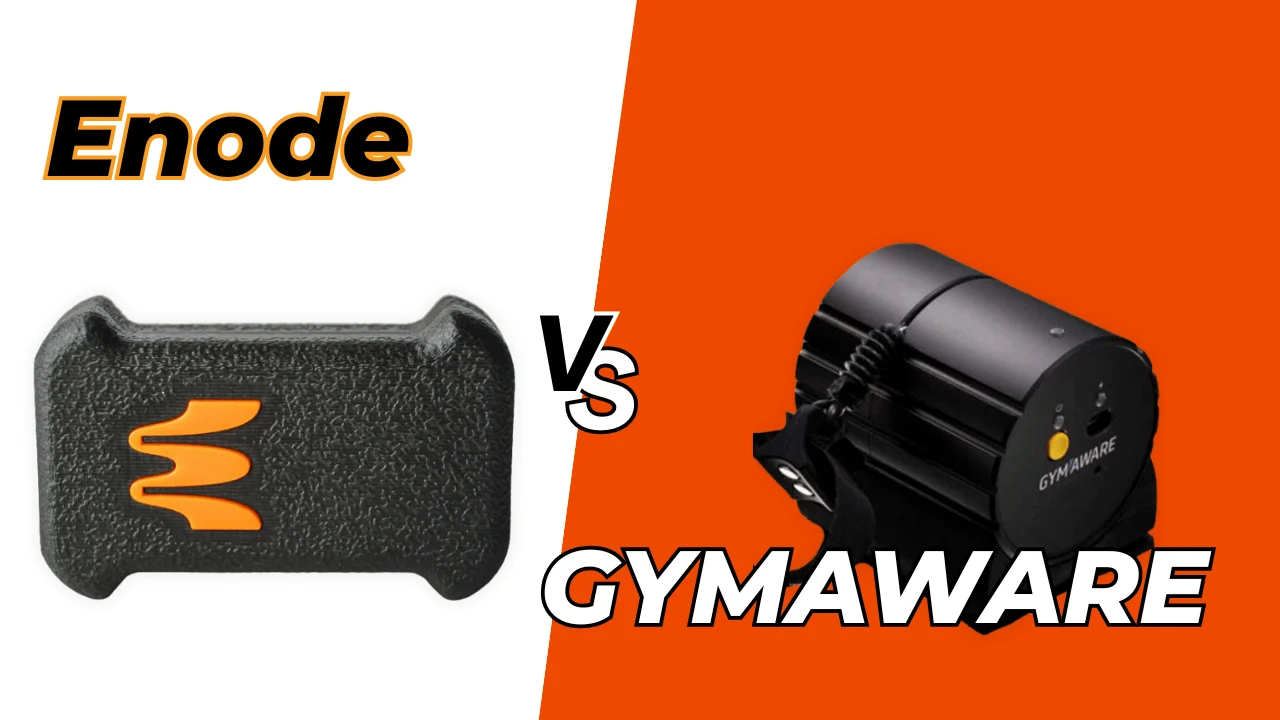“I had a pastor one time say ‘you can have anything you want, but you can’t have everything you want.’”
For goal-driven coaches, this is the perpetual dilemma—choosing the right priorities to direct your ambition and energy towards and identifying what just won’t make the program this go-round. David Neill, Head of Performance at Liberty Christian in Argyle, Texas, joins host Justin Ochoa on Rapid Fire and shares his journey from playing football at Texas Tech to coaching in university S&C departments at Cincinnati and Texas to taking on his current role at the high school level.
Throughout the conversation, that underlying theme continues to re-emerge: “What am I going to be great at and then what am I going to leave off so I can be great at what I want to be great at?”
On the big picture side, for Neill this decision begins with where he’s chosen to plant his feet. While conceding that he misses the electricity of college football game days and the structure in place to guide elite athletes through a process with greater control over their schedule, nutrition, and specific training outcomes, Neill relishes how he can play a pivotal role for high school kids at a transitional phase in their lives.
“The best part about high school is you have a way more impactful relationship with your athletes,” Neill says. “College guys come in, it’s transactional—they’re looking to get a degree, they’re looking to go on to the NFL, they’re kind of established in who they are character-wise and purpose-wise…whereas high school kids, 15-16-years-old, you’re figuring out what life is about, you’re figuring out what your values are, you’re figuring out what it means to be a man and to have a role in that process for young people is incredible.”
What am I going to be great at and then what am I going to leave off so I can be great at what I want to be great at? asks @DNeill62. Share on X
Rapid Fire Episode 6. Watch the full episode with Coach David Neill and Coach Justin Ochoa.
In addition to choosing to play that meaningful role as a leader and mentor, Neill also steps in to direct a critical developmental phase for his athletes. To do so, he has to let go of what he may view as a perfect training plan and instead adapts to circumstances which include athletes who are undersized and who are struggling with basic movement patterns all while potentially being distracted by other sports, holiday breaks, school dances, tests, and all the little detours in a high school day.
“When I look at training, my first priority is we have to work in consistent movement patterns that are going to help my athletes,” Neill says. “As you train younger athletes, you’re much more general in your training approach. I care far less about transfer to the field and far more about general movement patterns, general strength. Just getting the basics down and laying foundations.”
When I look at training, my first priority is we have to work in consistent movement patterns that are going to help my athletes asks @DNeill62. Share on X
Rapid Fire Excerpt. Coach Neill on keeping it simple and focusing on fundamental movement patterns with high school athletes.
With the consistent movement patterns he hits—including squatting, hinging, pulling, and rotating in the weight room and targeting acceleration, max velocity, and deceleration patterns wherever possible—Neill returns to the ‘economy of time’ as a driver in decision-making. From integrating Tony Villani’s game speed concepts for creating separation to recognizing the value of hypertrophy with teen athletes to prioritizing neck training to mitigate concussion risk, those all begin with having the key bases covered first.
“Can they move well? Okay, now can they move well and be strong in those movement patterns?” Neill asks. “I think those two goals handle 90% of your training at this level.”
Since you’re here…
…we have a small favor to ask. More people are reading SimpliFaster than ever, and each week we bring you compelling content from coaches, sport scientists, and physiotherapists who are devoted to building better athletes. Please take a moment to share the articles on social media, engage the authors with questions and comments below, and link to articles when appropriate if you have a blog or participate on forums of related topics. — SF







